Alexander Graham Bell Inventor of the Telephone By

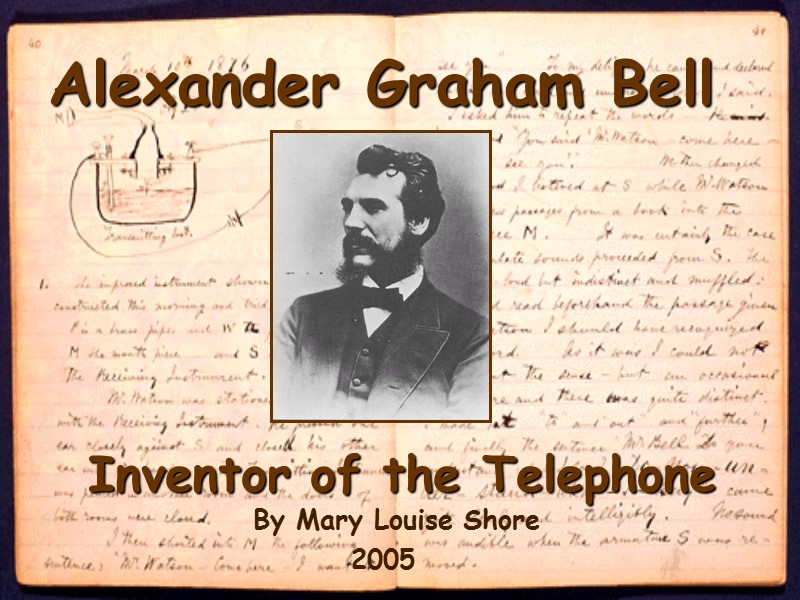
Alexander Graham Bell Inventor of the Telephone By Mary Louise Shore 2005
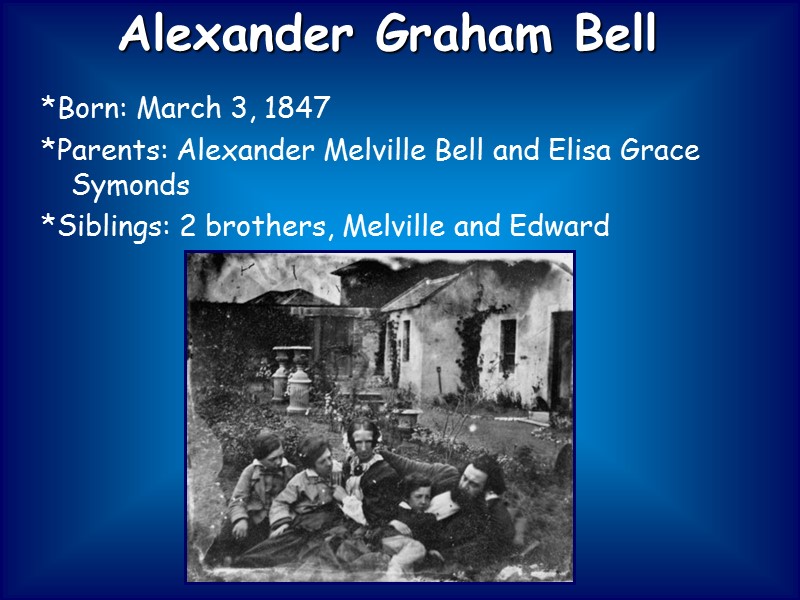
*Born: March 3, 1847 *Parents: Alexander Melville Bell and Elisa Grace Symonds *Siblings: 2 brothers, Melville and Edward Alexander Graham Bell

Alexander Graham Bell grew up in Edinburgh, Scotland with his family. Childhood
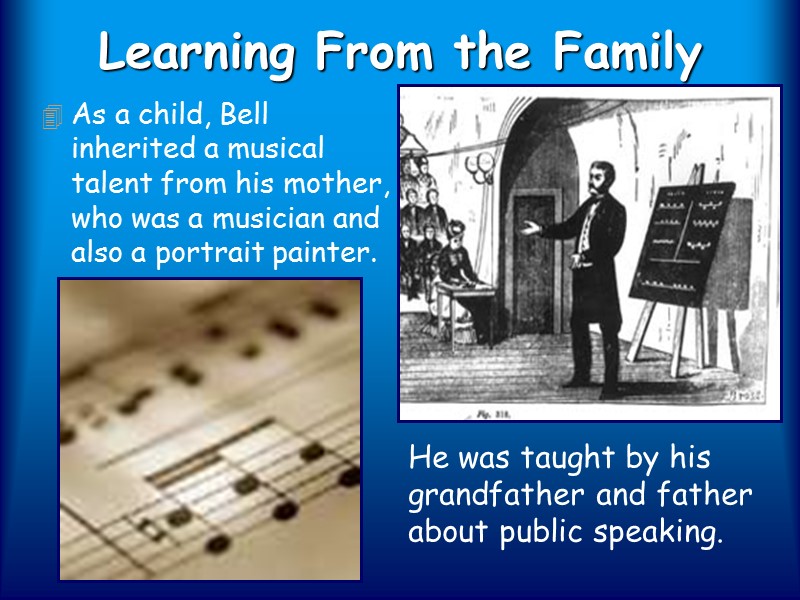
Learning From the Family As a child, Bell inherited a musical talent from his mother, who was a musician and also a portrait painter. He was taught by his grandfather and father about public speaking.
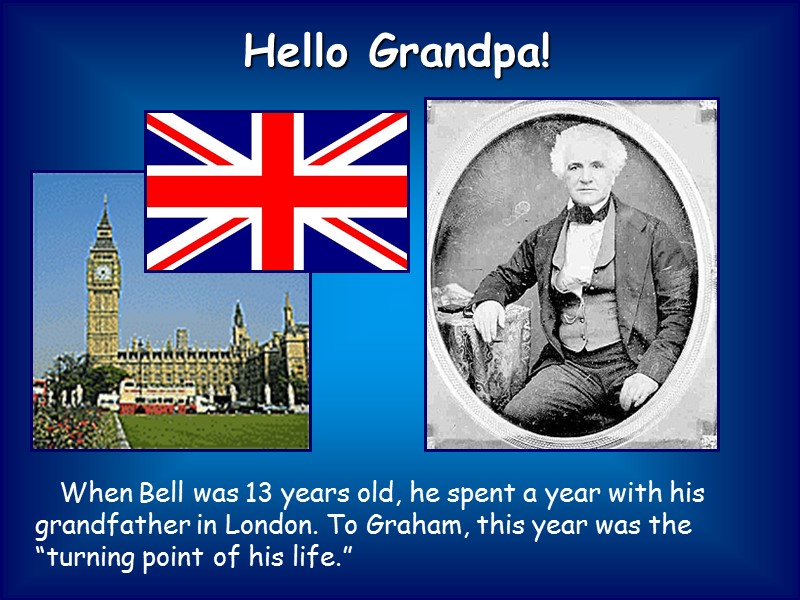
Hello Grandpa! When Bell was 13 years old, he spent a year with his grandfather in London. To Graham, this year was the “turning point of his life.”

Bell read books in the library about Herman von Helmholtz, a German scientist who experimented with electrical vibrations to make vowel sounds. Herman von Helmholtz He researched his experiments so that someday he might be able to reconstruct them in his own home.
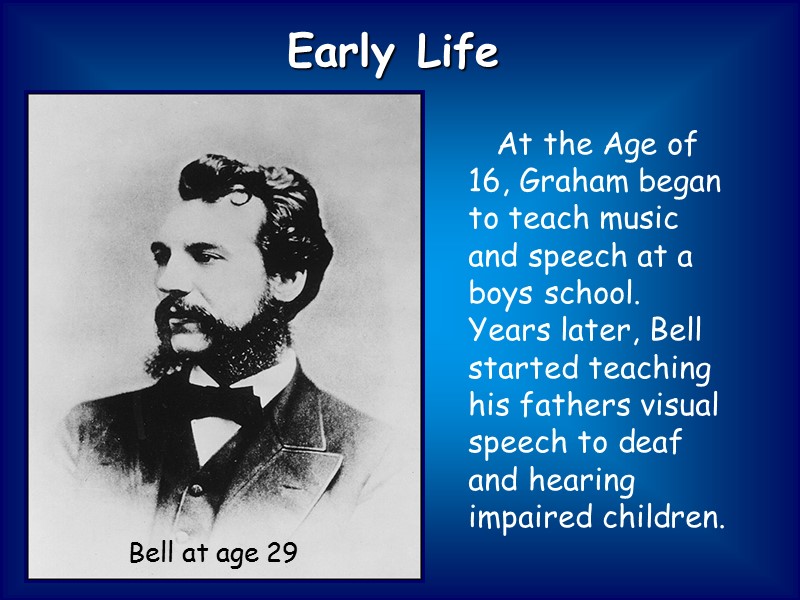
Early Life At the Age of 16, Graham began to teach music and speech at a boys school. Years later, Bell started teaching his fathers visual speech to deaf and hearing impaired children. Bell at age 29

Tuberculosis-1870 In 1870, Bell’s two brothers died of tuberculosis. Since Bell was also threatened his family decided to move to a healthier environment, Canada.

After Graham was safe from catching the disease, his job led him to be a physiology professor at Boston University in the United States. Hello Boston! Good-bye Canada!
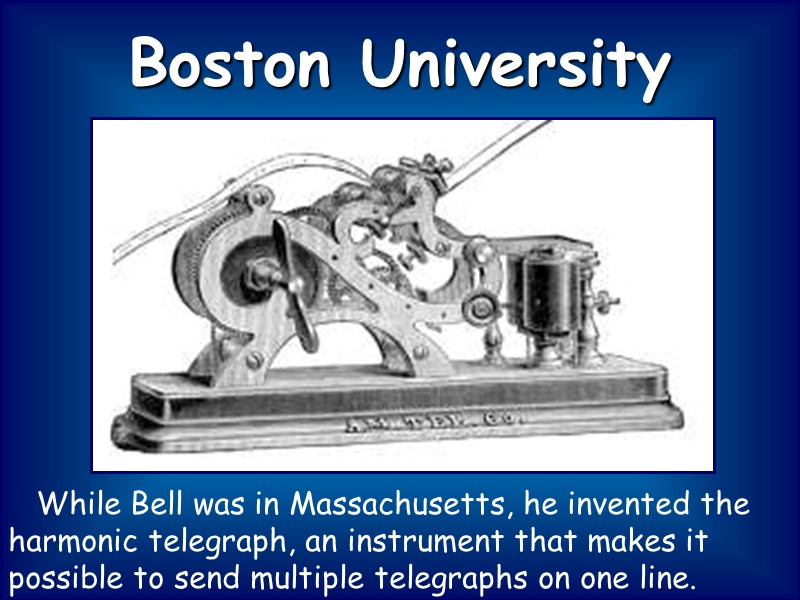
While Bell was in Massachusetts, he invented the harmonic telegraph, an instrument that makes it possible to send multiple telegraphs on one line. Boston University
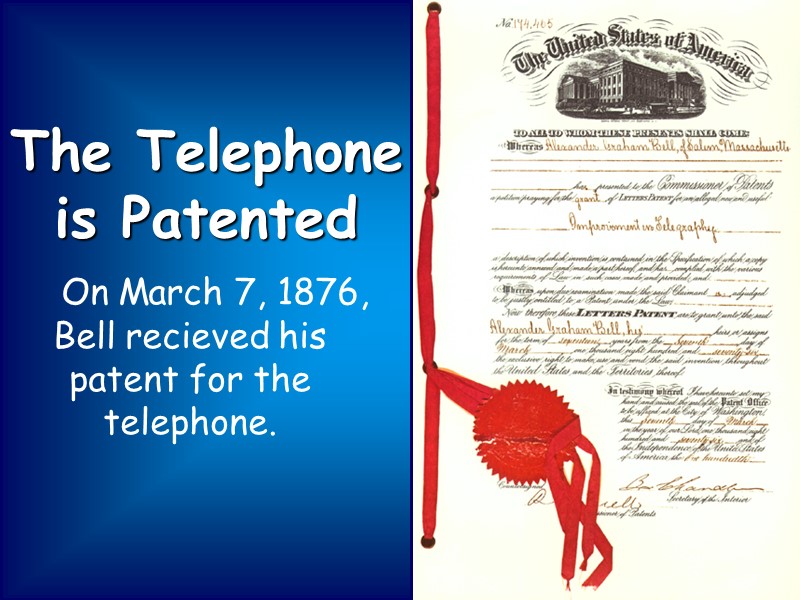
On March 7, 1876, Bell recieved his patent for the telephone. The Telephone is Patented
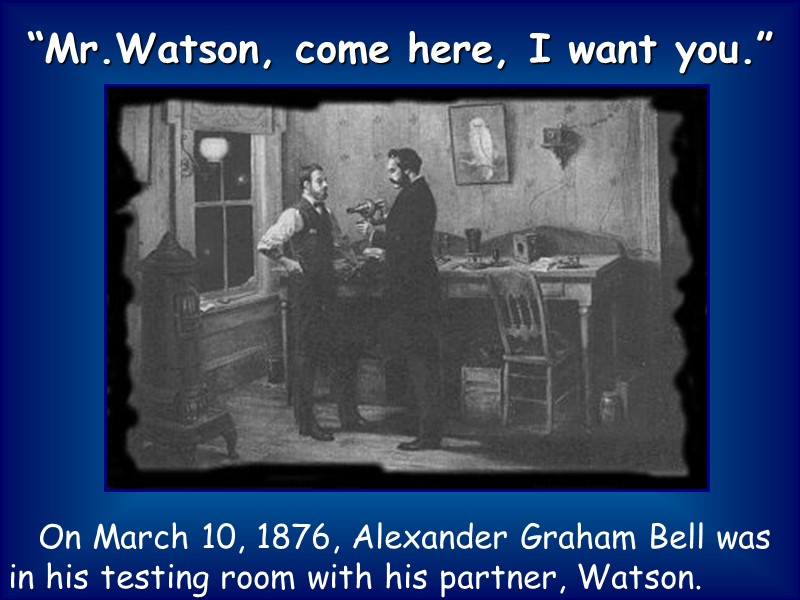
“Mr.Watson, come here, I want you.” On March 10, 1876, Alexander Graham Bell was in his testing room with his partner, Watson.
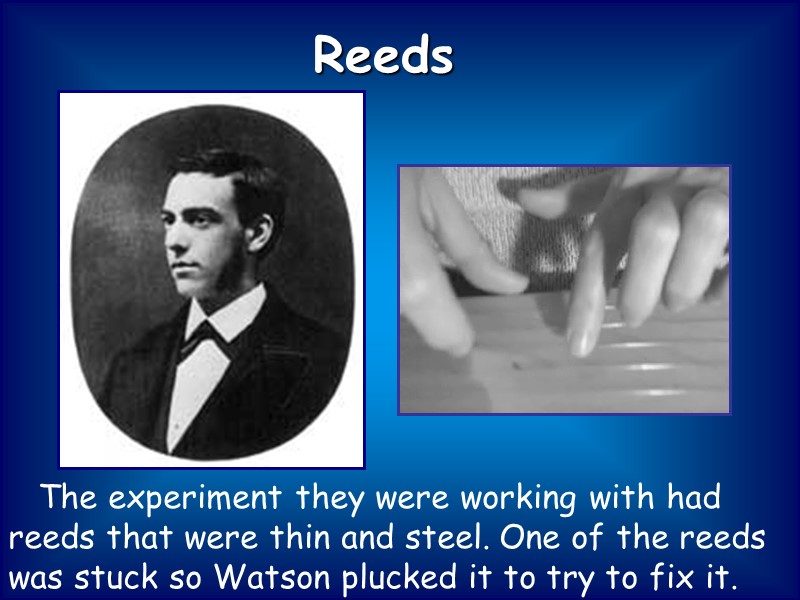
The experiment they were working with had reeds that were thin and steel. One of the reeds was stuck so Watson plucked it to try to fix it. Reeds
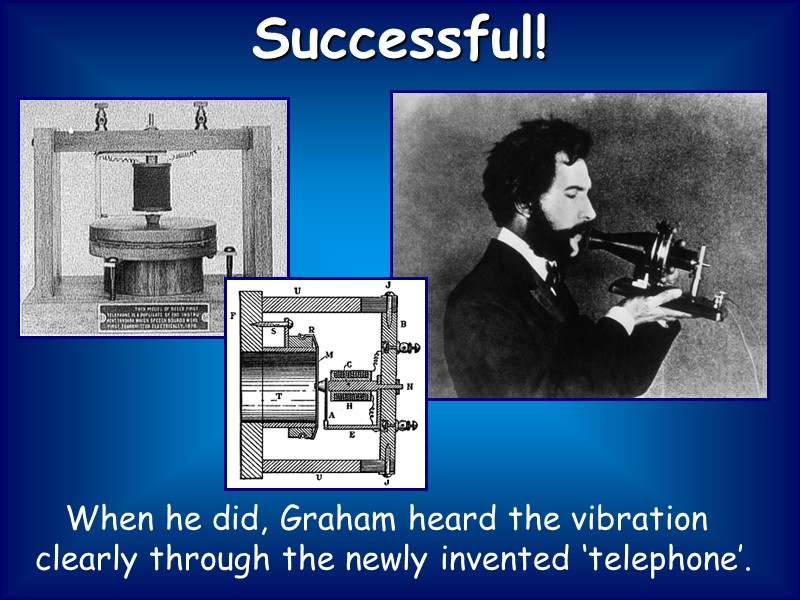
When he did, Graham heard the vibration clearly through the newly invented ‘telephone’. Successful!
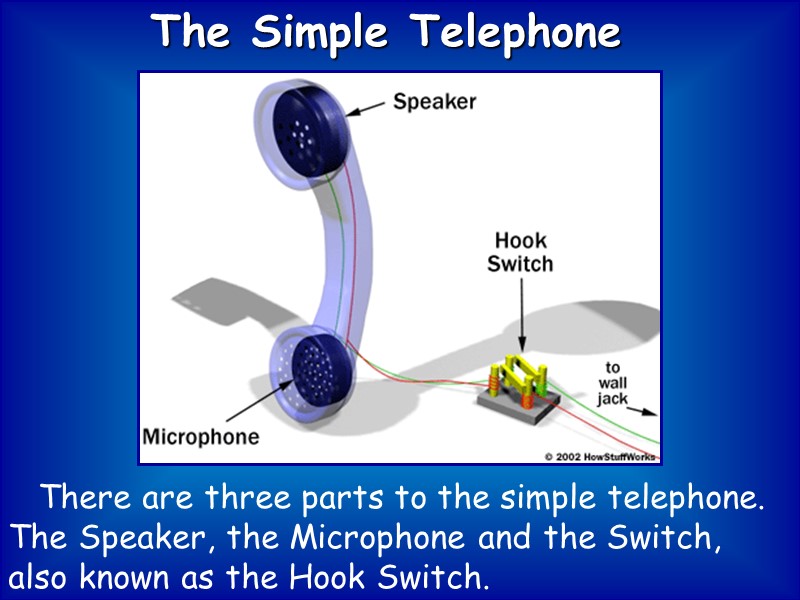
The Simple Telephone There are three parts to the simple telephone. The Speaker, the Microphone and the Switch, also known as the Hook Switch.
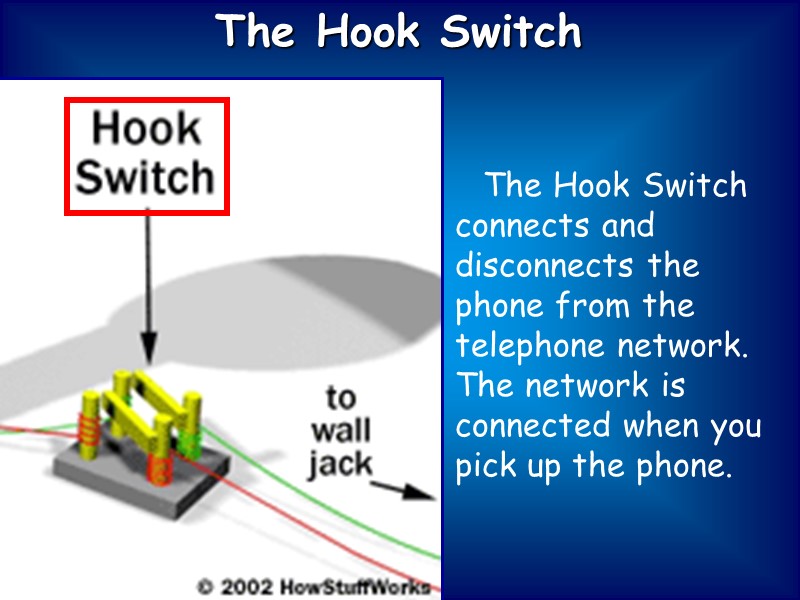
The Hook Switch The Hook Switch connects and disconnects the phone from the telephone network. The network is connected when you pick up the phone.
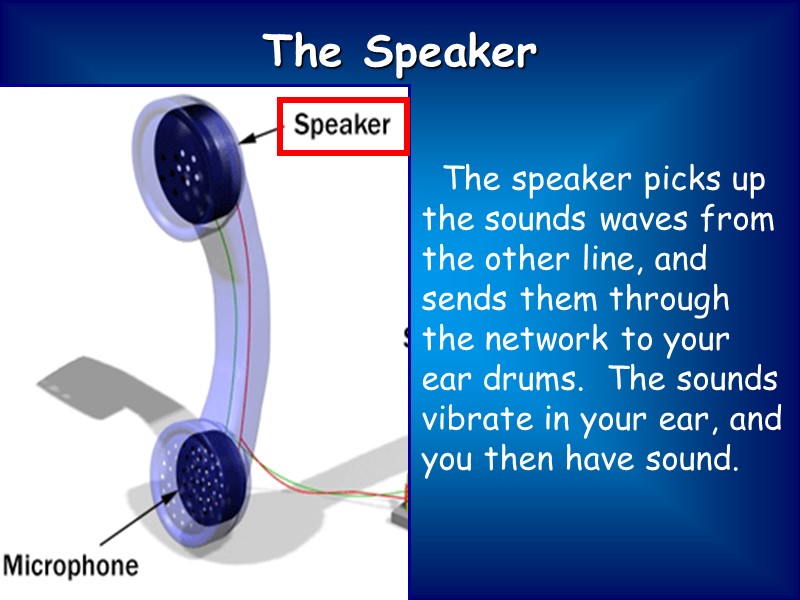
The speaker picks up the sounds waves from the other line, and sends them through the network to your ear drums. The sounds vibrate in your ear, and you then have sound. The Speaker
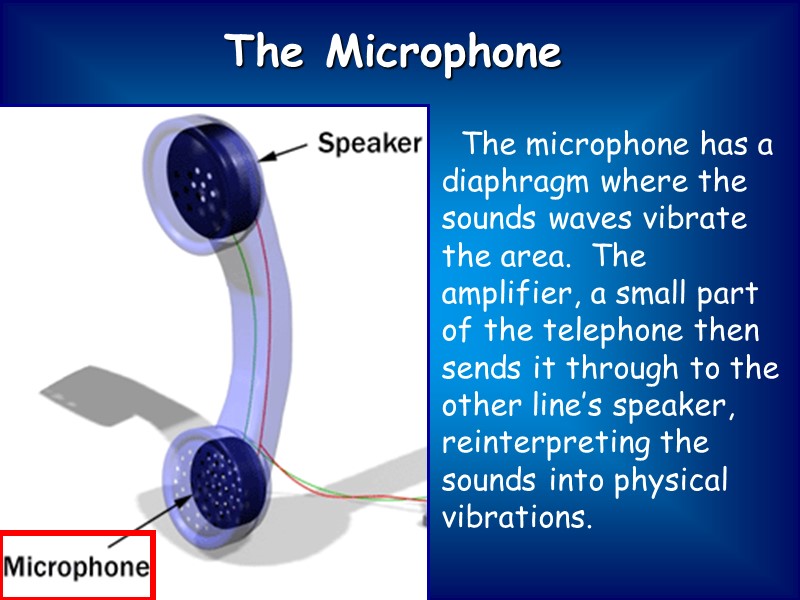
The Microphone The microphone has a diaphragm where the sounds waves vibrate the area. The amplifier, a small part of the telephone then sends it through to the other line’s speaker, reinterpreting the sounds into physical vibrations.
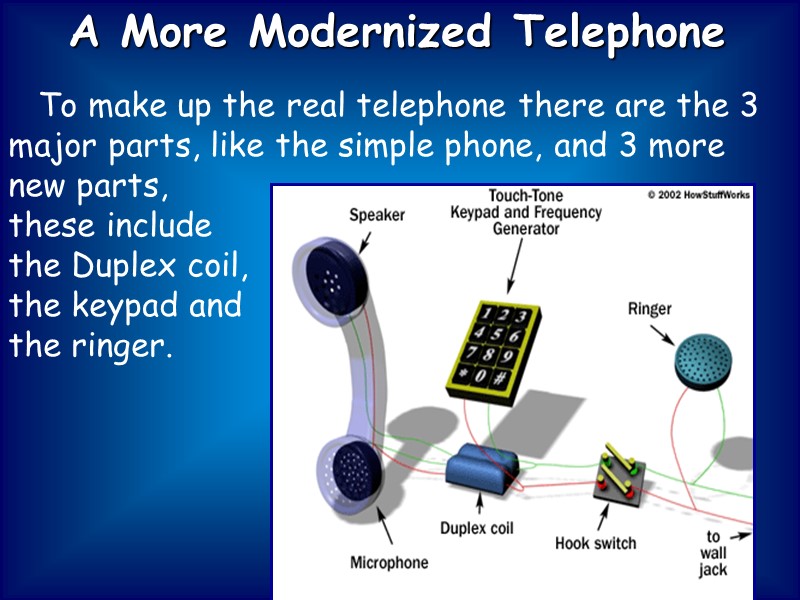
A More Modernized Telephone To make up the real telephone there are the 3 major parts, like the simple phone, and 3 more new parts, these include the Duplex coil, the keypad and the ringer.

The Duplex Coil In the simple phone, you can hear yourself through the speaker when you talk. The Duplex coil is a device that enables you to speak into the microphone without hearing your voice.
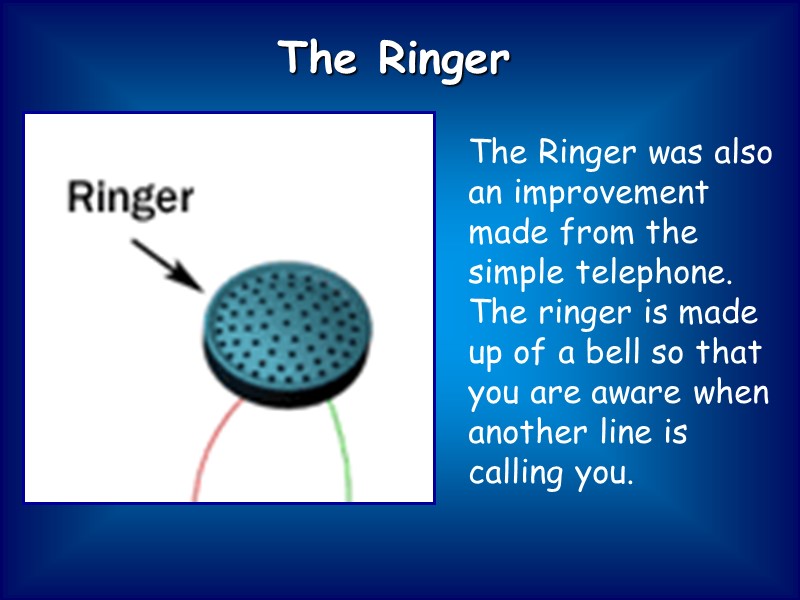
The Ringer The Ringer was also an improvement made from the simple telephone. The ringer is made up of a bell so that you are aware when another line is calling you.
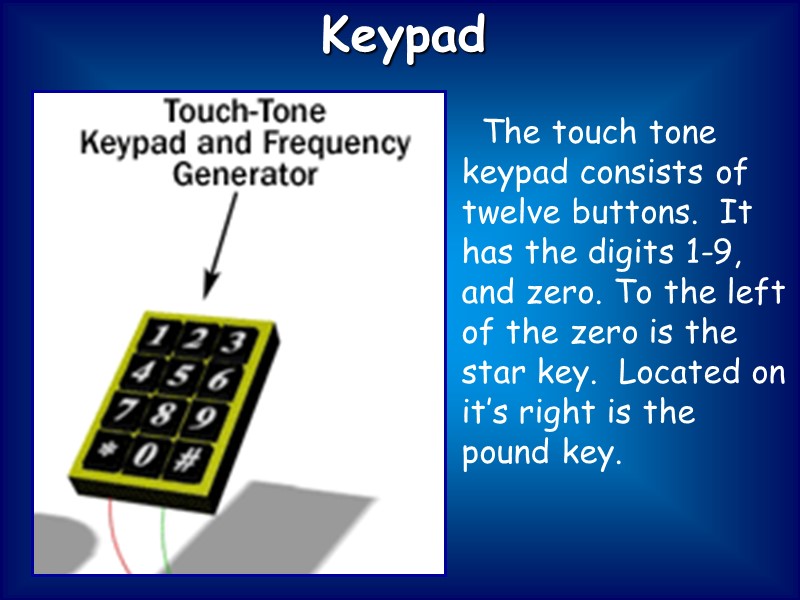
Keypad The touch tone keypad consists of twelve buttons. It has the digits 1-9, and zero. To the left of the zero is the star key. Located on it’s right is the pound key.

The Telephone The telephone may seem like a complicated machine, but it really is one of the simplest devices that you may find in your home, or anywhere else you can imagine.
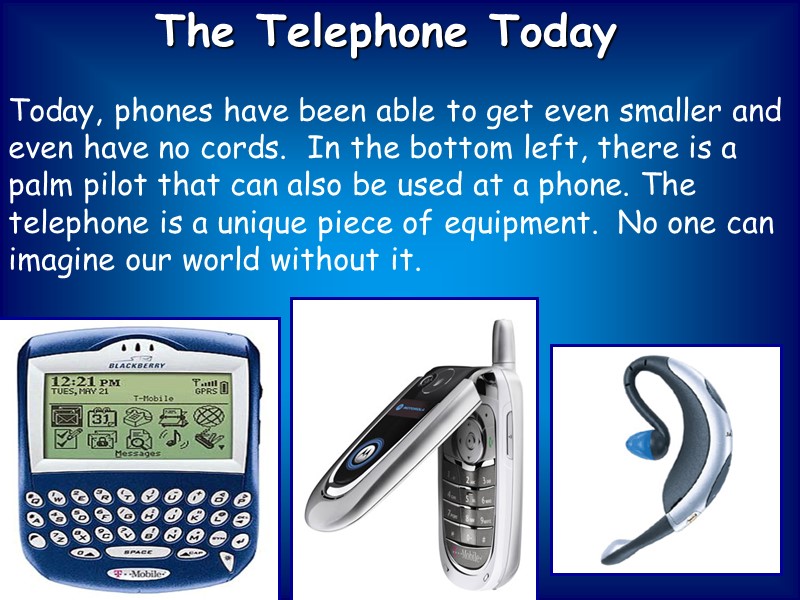
The Telephone Today Today, phones have been able to get even smaller and even have no cords. In the bottom left, there is a palm pilot that can also be used at a phone. The telephone is a unique piece of equipment. No one can imagine our world without it.
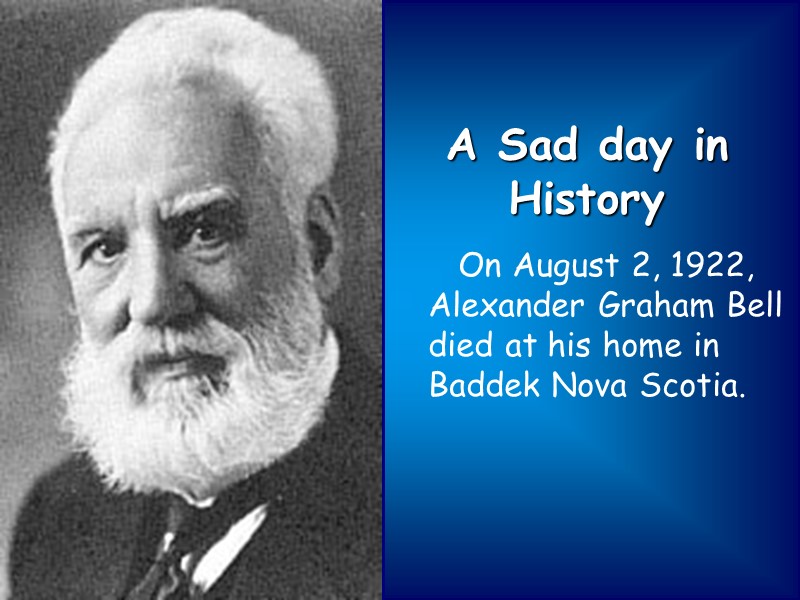
A Sad day in History On August 2, 1922, Alexander Graham Bell died at his home in Baddek Nova Scotia.
28290-bell.ppt
- Количество слайдов: 25

